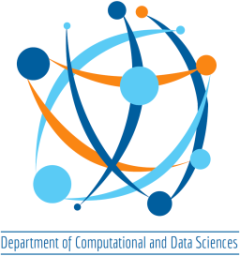Department of computational and Data Sciences
Department seminar
Title: Non-Equilibrium Plasma and its Use in Combustion: A Modeling Perspec6ve
Speaker: Taaresh S. Taneja, Department of Mechanical Engineering, University of Minnesota, USA
Date and time: 11 March 2024 (Monday), 10:00 AM
Venue: CDS 102
Abstract:
Non-equilibrium or Low Temperature Plasma is a state of a gas which is characterized by a difference in the energies of the electrons and other heavy species of the gas. Such a plasma typically constitutes of gas molecules, a relatively lower density of ions and rotational, vibrational, and electronic excited states, neutral radicals, along with free electrons. Non-equilibrium plasmas can exist at various gas pressures ranging from 0.1 – 106 Pa and gas temperatures ranging from 100 – 10000 K. Across these wide range of conditions, the physical and chemical properties of the plasma can vary substantially – which make them extremely useful in diverse technological areas such as semiconductor manufacturing, water treatment, medical equipment sterilization, nanomaterial synthesis, chemical reforming, combustion assistance, etc. Between 104 – 106 Pa and 300 – 5000 K, these non-equilibrium plasma discharges can be used for assisting combustion. This assistance is provided majorly through two channels – gas heating and chemical radical production. Both these channels can be used to ignite renewable and carbon-free fuels such as ammonia (NH3), which is very difficult to burn, and stabilize flames in challenging conditions such as gas turbines, scramjet, and rocket combustors. Moreover, the chemical pathways introduced by the non-equilibrium of the gas, can also help to lower, or completely prevent emissions from combustion, such as unburned hydrocarbons, soot, CO2, CO and NOx. High fidelity computational simulations (DNS / LES) of non-equilibrium “plasma assisted combustion” (PAC) face various constraints due to the wide-ranging temporal (10-15 – 10-2 s) and spatial (10-6 – 10-1 m) scales of this problem, which make the system of governing equations very stiff. Furthermore, the highly coupled interaction of electrostatics, plasma chemistry, combustion chemistry, and turbulent flow renders PAC its multi-physics nature. This talk will provide an overview of the governing physics, the mathematical formulation of different models, and a few technological applications of non- equilibrium plasma assisted combustion.
Biography:
Taaresh Taneja is a 5th year PhD candidate at the University of Minnesota (UMN), Twin Cities, who is currently focused on modeling non-equilibrium plasma assisted combustion. He works with Prof. Suo Yang, in the Computational Reactive Flow and Energy Laboratory (CRFEL) at UMN. For his research, he has received the UMII MNDrive Fellowship, NSF INTERN Supplemental Funding Opportunity and the UMN Doctoral Dissertation Fellowship, along with other travel grants for presenting his work at conferences. Taaresh has also interned at the National Renewable Energy Laboratory, Colorado and at the Sandia National Laboratory, California during his PhD. Before joining UMN for his PhD in 2019, Taaresh worked as a CFD engineer at Johnson Controls India Pvt. Ltd., Pune (2017 – 2019). He received his B.E. (Hons) in Mechanical Engineering from BITS Pilani, Goa Campus in 2017.
Host Faculty: Dr. Konduri Aditya
All are welcome



